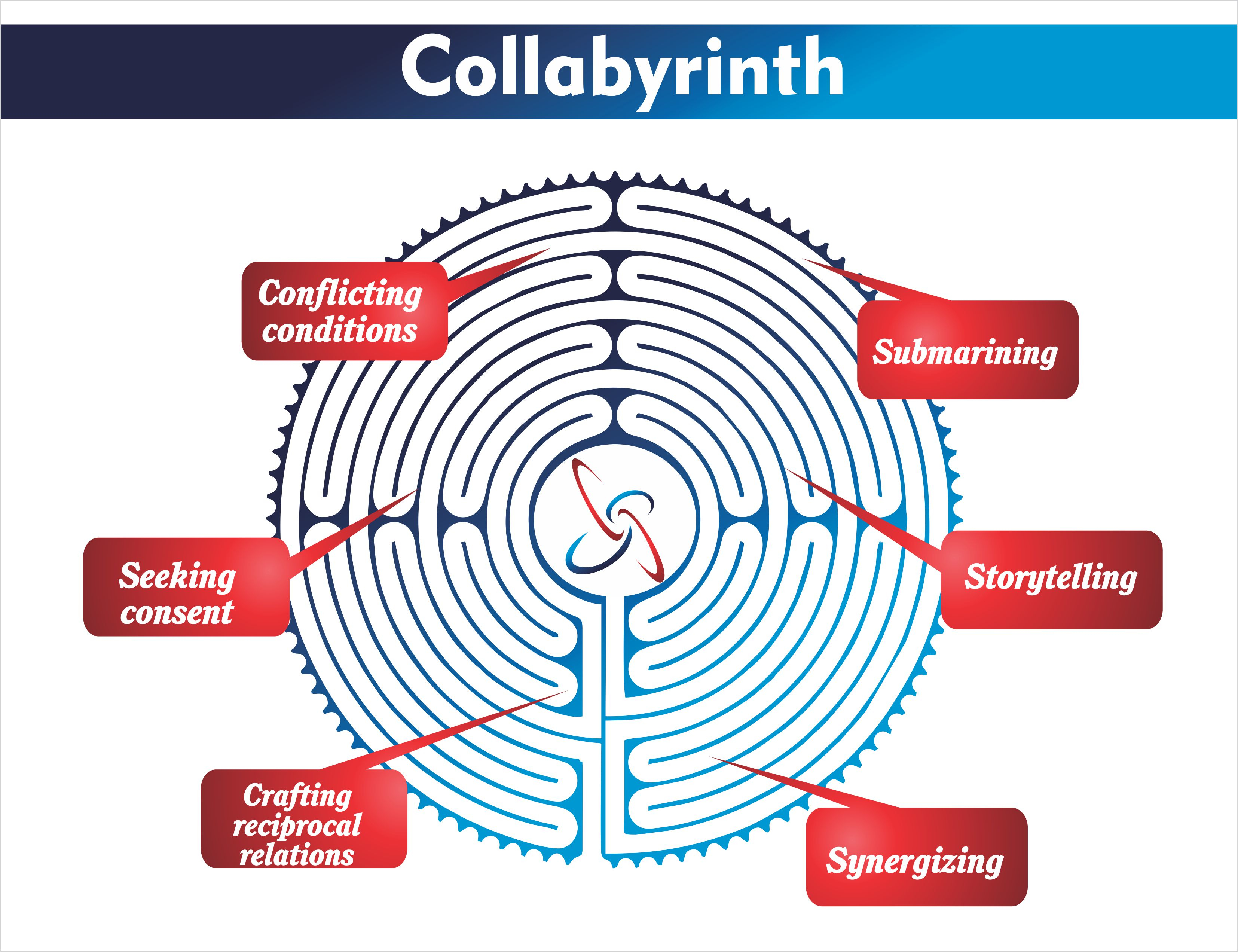
At work, in whatever form or organizing, collaboration is a salient topic. The arena of an organization is like a maze of different (national, organizational, and professional) cultures combined with the employees’ distinctive perspectives on their part of the work process. An organization can bee seen as a complex network of interaction, where working together requires people combining their norms, bridging gaps between their values and creating an understanding of what kind of behavior is accepted and not accepted. People need to translate and negotiate the differences amongst them so that collaboration can be fruitful. However, finding ways to capture everyone’s desires for the collaboration into one satisfying manner is often not an easy task.
If collaboration is so difficult, then why do we aim for a collaboration relationship?
I have to admit, if there is a choice, it might be best to avoid collaboration. However, there are numerous situations in which working alone is not sufficient to achieve desired results. For the execution of a project, for example, collaboration is inevitable. Due to the scope, the knowledge required, the cost and time involved, projects generally demand collaborative arrangements between organizations. Only when organizations combine their experience and resources, they can create value together.
In these situations, collaboration needs to receive most attention. Alternatively, in some occasions the project can be cut into smaller, separate projects. If a part of the project can be executed by one single organization, collaboration within this distinct project might be avoidable. Yet, collaboration between the separate projects remains highly important. To illustrate, picture a construction project that needs to build a railroad going through a tunnel. This project can be dived into smaller projects: project A focuses on building the tunnel and project B concerns with building the railroad. Organization A can build project A and Organization B can construct project B. At the interface of these independent tasks, where the projects meet, collaboration is crucially important to make sure the tunnel and the railroad are well connected. Consequently, collaboration between Organization A and Organization B is critical to make sure the tunnel connects with the railroad. One can understand the disaster and disgrace if the railroad could not be linked with the tunnel. Thus, answering the question addressed above, collaboration is aimed for when working together is the only way to accomplish complex tasks.
In light of the Panama Canal Expansion Program, project execution would be impossible without the collaborative efforts of various organizations. The journey towards developing a collaborative relationship can be seen as exploring a Collabyrinth[1]. This neology of ‘collaboration’ and ‘labyrinth’ reflects the complicatedness of collaboration. Organizational actors are obliged to find their way in the complex situation and collaboration is essential for understanding the terrain. Although project participants first disagreed on the route to follow, and might have felt disoriented, they soon came to understand that working together is the way to deal with obstacles encountered along their journey.
The Collabyrinth entails six practices of collaboration: (1) conflicting conditions, (2) seeking consent, (3) crafting reciprocal relations, (4) submarining, (5) storytelling, and (6) synergizing[2]. These practices of collaboration contain actions and activities that people enact while making sense of collaboration in their daily work life. The practices highlight how people deal with cultural complexity in the workplace and capture the doings and sayings that adverse collaboration as well as that build and connect towards a collaborative relationship.
These practices are dynamic and evolving. That is, as people continuously translate and negotiate their practices to make sense of the current situation, these practices are not merely static and vast, but rather flexible and moving. What is more, these practices are not a fixed outline for all actions and activities represented in the process of collaboration. People take a moment in time to reflect on their practice and, if needed, to modify the practice. On a daily basis, processes of translation, negotiation and power struggles are continuously present in the employees’ actions and activities, and these are reflected in the practices of collaboration. Consequently, when no serious attention is paid to cultural complexity in the organization, collaboration results in conflicts and frustration among its employees.
Knowing which practices of collaboration can occur in building a collaborative relationship supports organizational leaders in enhancing collaboration and, as such, deliver quantity and quality, on time and within budget.
[1] This blog post is based on Smits, K. (2013) Cross Culture Work: Practices of Collaboration in the Panama Canal Expansion Program and was earlier published on LinkedIn
[2] In the following blogs I will elaborate on each practice of collaboration. Stay tuned!







